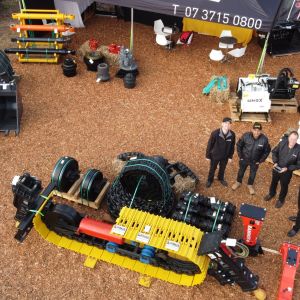![]()
We’ve all heard that productivity has stalled, and that we need to improve productivity to improve our pays and wealth. However, we rarely hear examples of what improved productivity actually looks like, and often walls go up because of fears of job losses. As per the below industry examples though, improved productivity is more about working smarter, not necessarily harder.
Waste in any situation is not good, and what we often forget is that someone is always paying for waste. Chances are if you don’t know who that someone is, it’s most likely you. This means that scarce resources are consumed in something unproductive, rather than put to use where it can provide a benefit. The worst kind of waste relates to things that are avoidable and in many cases even create more issues and costs than the issue they perhaps set out to prevent in the first place.
The fifth Intergenerational Report was released in June, and it highlighted that the rate of increase in our living standards will fall, perhaps sharply. The underlying assumption is that productivity will improve from the current 5 year average of 0.5% (and still declining) to the 30 year long term average of 1.5%. To put this into context, this 1% difference equates to an extra $10,000 per annum difference in average incomes across a decade. That’s a lot of squandered wealth.
My disclaimer with the below examples is that I’m not a builder, so there may be reasons why the below happens the way it does, and I’m happy to listen to the reasoning. I have however been involved in several construction projects and coming from an “outsiders” viewpoint might bring some open eyes and a different perspective. These examples are from observations on several projects around the Brisbane area:
- A dirt/gravel construction site has a roughly 300m2 section of concrete poured outside the site office, lunchroom and toilets, presumably to keep dirt out. Why not use removable/reusable mesh flooring? The concrete then has to be removed and disposed of at the end of the project.
- An excavator idling on standby for over 3 hours waiting for supplies for the project to continue. Better planning, more trucks on the rotation to remove materials etc can reduce this. The contractor was charging based on the running time on the hour meter. Not only is this not good for the machine, it is costing unnecessary money through fuel use, more servicing requirements etc. Sometimes the waiting time is unavoidable. Perhaps a simple contractual change of say a 25% reduced hourly rate for waiting time (where the machine is not required to run) would reduce cost for all parties, and benefit the environment.
- A requirement to put in a roughly 1m high dirt mound wall on the outside of a temporary construction fence “to stop the potential for parked machines to roll onto the construction site”. The machines were permanently parked in accordance with standard practices (i.e. not moving for several weeks if at all), and if someone was to drive the machines deliberately, the mound would not be any real impediment. So 1.5 days wasted installing a mound (plus eventual removal), plus the delivery and subsequent removal/disposal of the materials. Estimated waste: $10-20,000.
- A new Council requirement that Council must hold a pre-construction meeting with the builder. It was supposed to have a max 2 week period for the meeting to take place. Whilst someone who has never built a commercial shed before might benefit from this, the professional builder had been specialising in these buildings for over 30 years. It took just shy of 8 weeks for the Council to finally hold the short formality meeting and give the tick to proceed. Meanwhile, site huts etc were on hire for 6 weeks unnecessarily, costing $18,000 per week. Plus all the rescheduling of materials that were already on order, some having to be stored at additional costs also.
- 2 stop/go workers on a road construction project, who were standing on the side of the road outside the staff carpark (never with more than 20 parked cars in it) on an industrial park with clear visibility in all directions. Unlike all the other functioning businesses along this road, any time a normal car had to go into or out of this car park, the two employees had to step out onto the roadway with only a sign as protection to stop any traffic. Wondering how these same drivers handle entering and exiting any shopping centre or similar. This went on for several months, and surely a vehicle operated by a licensed driver is much safer than putting two people permanently out in the elements with less protection than the vehicle occupants they are assisting.
- A shopping centre escalator from a major brand out of action for 4 months, waiting for parts to arrive. Meanwhile, the shopping centre put 1-2 security guards on during all open hours to supervise customers having to walk up/down the adjacent escalator. Simply ensuring parts are available for any key plant or machinery will reduce downtime and minimise costs.
- A communications provider that decided to change the supplier of the large battery packs to run their transmitting stations as a “cost saving”. Progressively changing them out at end of life might make sense, but the contractor doing the replacements had installed one set 6 weeks prior and another 8 weeks prior. As they have a policy of not onselling the batteries, this creates further issues with disposal to landfill.
- Not reading surveyors reports. A contractor who highlighted to the client that the surveyors report top line stated not to do the job during the wet season, yet the customer insisted on the work being carried out in February. Loaded up a barge to PNG with excavator and other equipment, first bucket digs down to 400mm and voila, hits water. 2m to go. Pack up, go back home, cost of $100,000 in mobilisation and demobilisation, only to come back a few months later.
- Another site with known ground water issues, with water seeping from a natural spring into the adjoining creek for many years already. Start digging, again hit ground water. Regulations state that the site must install a pumping station to drain the water, and put it through a filtration plant before returning the same water to the same creek. A diesel generator was running on site for about 2 months to power the required equipment, which was all on hire. Total cost $60-80,000, with the result the same as without having all the equipment there. Considering this was a small construction project, this cost was over 5% of the total budget.
- A utilities provider required power for a piece of infrastructure for a 12 month period, and offered what might have seemed like a generous amount by prepaying to tap into an existing power supply source on the adjacent private land. They were given the option to put in a sub-meter to be charged for usage, but they said that’s not how it worked. When finally given an estimate on what power their equipment was likely to use, it turns out that the proposed payment was less than 20% of the cost. So instead of again taking up the connection option, they chose to install a 30kVA diesel generator, that remained there for over 7,000 hours. I’m not an expert on power price comparisons but am guessing they paid 3-4 times more for their power than they needed to.
The above is a very worrying trend in that several of the examples are the exact opposite of what many companies are claiming to want to achieve (net zero emissions and actually introducing safety issues rather than avoiding them in the first place). What is often missed is that there is a finite amount of investment funding (whether tax money or private money). Some estimates claim that about 30% of an average construction job is waste, which means that for every two jobs currently being built, there is a third one that never see’s the light of day. And the ones that are built have a cost flow on effect for years to come, as it flows through to higher rents/tolls/registrations etc also.
I would love the hear some of our readers thoughts and stories on this. We are all struggling with a shortage of skilled and willing people, so finding ways to do more with what we have available is essential to the viability and growth prospects of our industry, the businesses that make our industry, and the wealth we can create for all stakeholders involved in the business.
As always, onwards and upwards!
Fred Carlsson
General Manager



